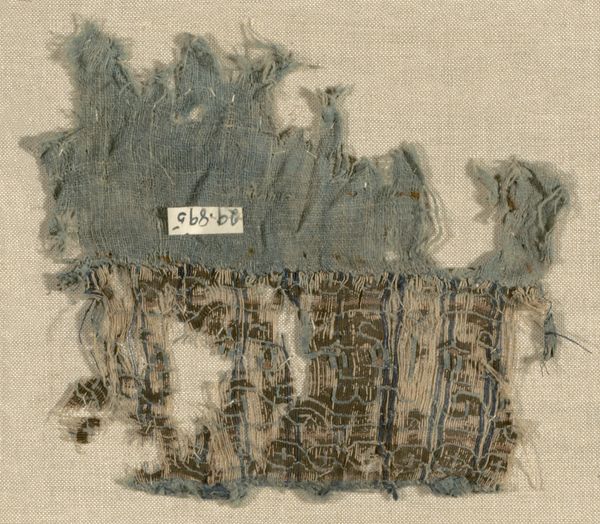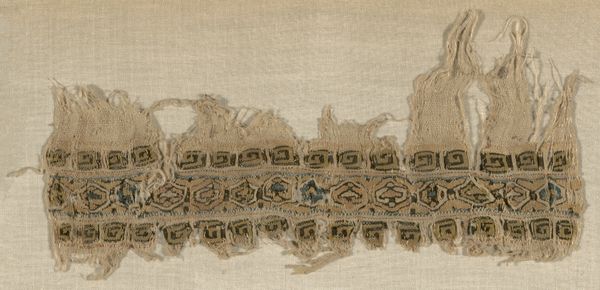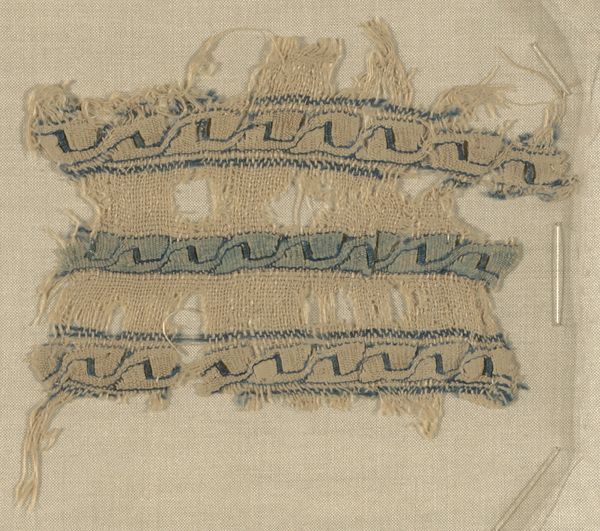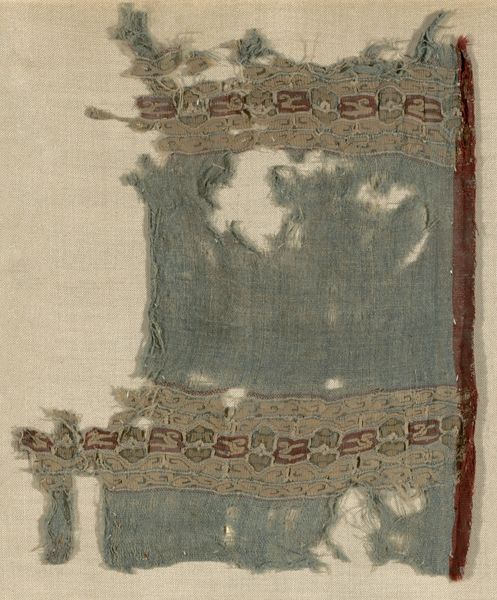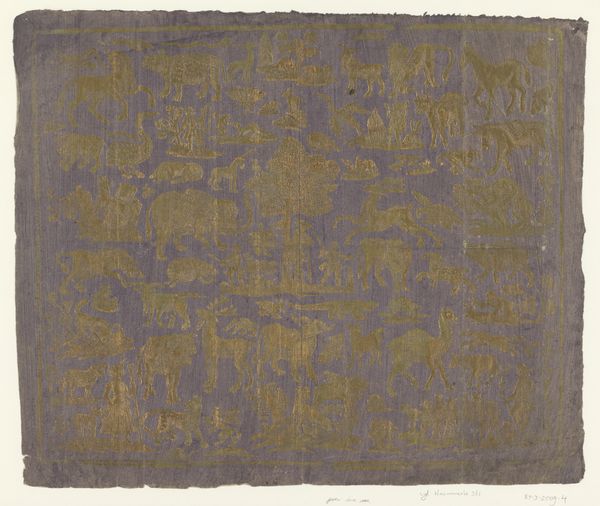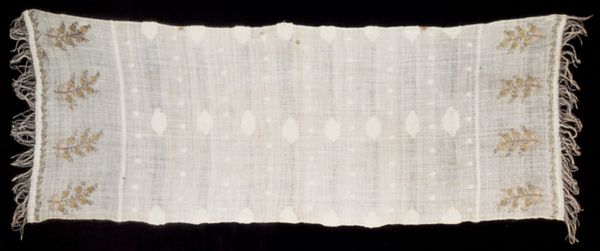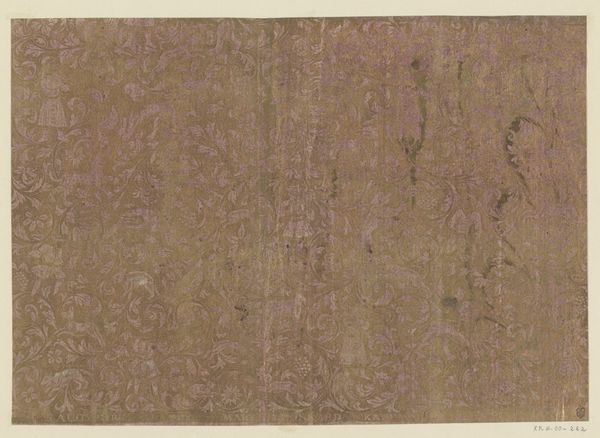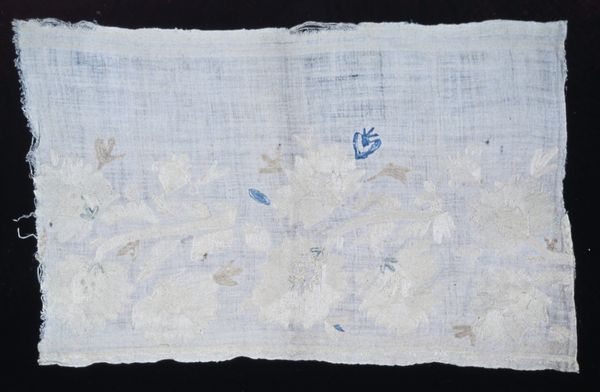
mixed-media, fibre-art, weaving, textile
#
mixed-media
#
fibre-art
#
medieval
#
weaving
#
textile
#
egypt
#
coloured pencil
#
islamic-art
#
mixed medium
Dimensions: 9.5 × 26.1 cm (3 3/4 × 10 1/4 in.)
Copyright: Public Domain
Curator: The artwork before us is simply titled “Fragment,” likely dating back to sometime between 969 and 1171. Created by an unknown artist, this textile work now resides here at the Art Institute of Chicago. Editor: My first thought is one of resilience. The raw edges of the fabric, its fragmented state, it feels almost mournful, yet it's strangely beautiful. Curator: The fragmentary nature speaks volumes. Think of what was consciously preserved—what did it symbolize to those who deemed it worthy of survival, however incomplete? What narrative did it once weave, both literally and figuratively, within its community? Editor: I’m struck by the medium itself – the rough-hewn nature of the textile and those repeated woven elements. The work involved in creating even this small "fragment" must have been considerable. How was the colored fiber sourced? Was the creation of such items commonplace, or indicative of a certain status? Curator: Egypt, where the piece originated, experienced cultural continuity through symbols that reflected power, religion, and daily life. Notice how the woven geometric elements carry recognizable cultural meanings, adapted over time in the Islamic tradition. Were these protective symbols? Royal insignias? Perhaps motifs narrating a popular tale? Editor: And thinking about it now, its incompleteness underscores the fragility of material culture. This artifact challenges our obsession with art in pristine condition, prompting us to think about its journey. Who wore it? Was it intentionally cut for repurposing? It could have once served a functional, utilitarian purpose or have been intended for display in a domestic space. Curator: These fragments offer tangible connections to a world now mostly vanished. They function as triggers for cultural memory, helping us visualize aspects of identity and cultural beliefs, however partial that vision may be. It offers the allure of solving a historical riddle. Editor: Exactly. To truly understand "Fragment", we need to consider the social and economic context of textile production in medieval Egypt. Labor and time were invested, and the act of preserving and displaying the object—now deemed art—adds another layer. I find it really intriguing. Curator: The beauty lies, perhaps, in its mystery. In recognizing its brokenness, we acknowledge the limitations of our own knowledge and open ourselves to a deeper appreciation of its cultural significance. Editor: Absolutely. And by interrogating this object's creation and ultimate degradation, we consider the lifecycle of a piece of material culture, one that may have changed form and function over centuries. Thanks for revealing so much to consider!
Comments
No comments
Be the first to comment and join the conversation on the ultimate creative platform.
